- Home
- Thomas Keneally
The Great Shame: And the Triumph of the Irish in the English-Speaking World Page 2
The Great Shame: And the Triumph of the Irish in the English-Speaking World Read online
Page 2
They read, for example, accounts of that summer’s Kingstown (now Dun Laoghaire) Regatta. ‘After the morning sailing races, all the Dublin establishment attended a splendid lunch in a huge marquee pitched in the Commissioner’s store yard.’ Then the Lord Lieutenant and Lord Paget returned to Dublin in separate vehicles, and in Mount Street Paget’s horses and vehicle ran into a Dublin urchin. His Lordship reined in the horses to prevent his carriage crushing the child, and footmen carried the bloodied child to Mr Burrowe’s, apothecary, Lower Merrion Street. There were hopes for the survival of the little sufferer.
The Lord Lieutenant might have enjoyed the opportunity to be of direct effectiveness. He could not have indulged such simple hopes for the health of Ireland as he did for the health of the Mount Street urchin. For in describing the ills of the kingdom of Ireland, commentators of that period rarely knew where to start.
In that very same summer of the Lord Lieutenant’s encounter with ‘the incautious child,’ a peasant cottier and farm labourer from East Galway named Hugh Larkin was waiting in the county gaol in Galway city. He was to be judged for a gesture of discontent against his landlord, and so against the system represented and protected by the Lord Lieutenant, Dublin Castle and the Parliament at Westminster.
Hugh was twenty-four years old, married, blue-eyed, robust, and 5 feet 7½ inches tall. According to his East Galway descendants, he was the intense, lively, likeable son of a widowed mother. Then or later he became hard-drinking, yet his record would not imply he was reckless or utterly headstrong.
Larkin came from a scatter of houses at a crossroads known as Lismany. This name for the landscape in which he had spent his childhood and youth bespoke pre-British ownership. The Irish name was Lios Maine, the fort of Maine, long-ago king of the region called Hy Many. This kingdom was made up of parts of modern Galway, Roscommon and a small slab of modern Tipperary. The Gaelic lords of the region had been dispossessed after the victory of the forces of England’s King William III over the Irish at Aughrim, a village north-west of Lismany, in 1691.
During Hugh’s childhood people had believed that the old Gaelic system was likely to be reasserted by God in some day of jubilation, but that day now seemed too remote to save him. Hugh’s depression in Galway gaol arose chiefly from homesickness for Lismany, his two infant sons, and his wife Esther Tully, whom he had married three years before in the chapel of the Catholic parish of Clontuskert.
That very name, Clontuskert, showed that Hugh’s kind of Irish walked the earth with two competing addresses in their heads. For administrative reasons, Dublin Castle had divided the country into Church of Ireland parishes, the smallest local unit, and then into larger baronies, somewhat akin to municipalities. So Larkin’s official and English-language address as a member of the United Kingdom was (Church of Ireland) parish of Clontuskert, barony of Longford, County Galway. His emotional and native address, however, was (Catholic) parish of Clontuskert, diocese of Clonfert, Hy Many. Perhaps this double geography the peasants carried in their heads was one of the reasons those in power saw them as sly and duplicitous.
Esther and Hugh, living virtually in the midlands of Ireland, spoke English, the language of government and commerce, when they talked to their landlord or went to market, but courted, sang, praised and mourned in Irish. The courtship of Hugh and Esther had been, if at all characteristic of their society, particularly ardent and poetic, driven by furious longing, observed by an entire rural community which did not countenance fornication, but put a premium on flirtation as an art, and on the extravagant use of the images of desire. Gaelic love verses and songs which have come to us in translation indicate the style of eloquent persuasion Hugh would have been required to use with Esther.
She could cheat my heart to believe in marvels,
That no grass would grow, that no moon would shine,
That the stars are lightless, that she could love me;
And oh! Christ in Heaven that she were mine …
There is no hill and there’s no valley,
No road, no bog that she passes by
But is filled with music, heart-breaking music.
The love poetry of a labourer like Hugh was far more elevated than the squalid milieu where love was consummated—the marriage bed for Hugh and Esther was at best a low-lying cot of wooden laths and leather straps, at worst a mass of straw covered by a blanket. Courtship done, union achieved, Hugh and Esther begot and lived with their infant children Patrick and Hugh, and with Larkin’s widowed mother, in a stone cottage which stood at the crossroads of Lismany, south of the East Galway city of Ballinasloe and on the road to a village named Laurencetown. A cottage some 25 feet long still stands on the site, and at least its lower walls were part of the home within which Hugh and Esther lived out their short married life.
Generally, when Galway is mentioned, people envisage the bare grandeur of the western end of the county, the region called Connemara. But the country where Hugh and Esther Larkin lived was a verdant area of gentle downland, broken up by copses, heath thickets and brown peat bogs. The Shannon River flowed to the east of Lismany crossroads, and on fine days Hugh could see the blue Roscommon mountains. The barony of Longford was intersected by the Grand Canal, a wonderful man-dug river of commerce between the Shannon and Dublin.
But Hugh in prison was more than 60 miles from that landscape. The determining fact of his life was that for acts committed a little west of Lismany crossroads he was about to stand trial at the Galway City Assizes, in the stony majesty of the new and august Galway courthouse. On the morning of 29 July 1833, he shuffled, chained, with other prisoners of like background, in the passageway beneath a court he considered alien, and waited to be called up to the dock.
The Galway papers had earlier reported, as a minor item in the tapestry of conflict between small tenants and large landholders, that on 9 March 1832 a threatening notice had been pinned on the door of Hugh Larkin’s landlord in East Galway, a Mr Simeon Seymour of Somerset House, ‘stating that unless he complied with the Terry Alt rules and regulations, in raising wages and lowering the rent of lands, that he would meet an untimely fate.’ Seymour was, according to the notice, to abide by the rules and regulations of the Terry Alt corps (a secret society of cottiers and small farmers) or suffer the consequences. This notice was posted at night, probably by Hugh, and, if not, certainly by one or other of his Terry Alt associates. When there was in Hugh’s eyes no improvement in Seymour’s behaviour towards his labourers and tenants, the notice was followed up by the action which had now brought Hugh to court.
The grievance of young men such as Larkin was generally to do with land and the insecure nature of their possession of it. The Ballinasloe area was the property of Lord Clancarty of the Trench family. The enormous Clancarty estates were rented out to middlemen, stock farmers of a ‘careful, well-educated’ class of people who ‘in the process of time rose above their station.’ But to the south of Laurencetown lay the estates of the Eyre family, around the village of Eyrecourt, and it was Mr John Eyre who rented over 450 acres of pasture, farming land and bog to Simeon Seymour, another ‘careful, well-educated’ middleman landlord, who in turn rented some of that out to smaller farmers and labourers. It was with Seymour that Larkin had dispute. Seymour had needed the labour of Hugh’s late father, and now of Hugh himself, and at some seasons of Esther. For he was a grower of fine wool. The Dublin Society county survey for Galway declared that since the introduction of Leicester rams, East Galway sheep were ‘not to be equalled by the general stock of long wool sheep in England.’
Hugh knew from the elders of the region, including his mother and her sisters, that in the era of his birth and infancy ordinary people had been able to afford to keep more livestock and eat more broadly. Small tenants could afford butter! This gala period of greater wages, with good prices for pigs and woven cloth, was the time of the Napoleonic Wars. Tenants generally were more vulnerable now than in Hugh’s father’s day. The Tory government of Great B
ritain had been persuaded to pass the Act of Emancipation in 1829, granting political and religious rights to Catholics and lifting the oppressive net of Acts called the penal laws, and now Catholics could hold office, become mayors, magistrates, officers in the army, members of the judiciary and of Parliament. Yet the physical situation of most of them remained appalling.
It was Daniel O’Connell, the Liberator, who had brought about Emancipation. He was the most renowned Irish parliamentarian of Larkin’s young manhood, and the first Catholic of the modern era to sit in the House of Commons, as member for Clare. O’Connell was a rare and accidental beast—for he was a Catholic landlord even before Emancipation. His home in the remote glen of Derrynane in Kerry had been inherited from an uncle, Maurice (Hunting Cap) O’Connell. The eighteenth-century O’Connells had saved their land by entering into a symbiotic relationship with the local Anglo-Irish gentry for whom they smuggled Continental luxuries, particularly brandy.
O’Connell was in his late fifties in the year of Larkin’s crime, but ageless to the imagination of Hugh. He was a brilliant demagogue, an instinctive politician with that gift for gesture so beloved in the Irish world. He possessed the open, pleasant, meaty face which would be seen later in the century in Irish-American Democrat party bosses and in which genialty, compassion and opportunism all had equal play. His achievement of Emancipation meant more for the small, energetic, Catholic middle class than for the poorer Larkins and Tullys. But Irish families like Hugh’s considered Emancipation the foreshadowing of deliverance. They each had for this turbulent, populist invoker of hope a love and piety usually reserved for members of the Holy Family. ‘Everything and everybody has a party,’ O’Connell had declared, ‘save only the people. I go to Parliament to form the party of the people.’ This might be considered a flatulent claim, but O’Connell was perhaps the first European to build a mass movement from such sentiments.
During the Emancipation struggle, which Hugh well remembered, a peasant could belong to the Catholic Association, the organisational structure behind Emancipation, by contributing one penny a month. Outside Clontuskert parish chapel after Mass on the first Sunday of the month, Hugh’s parents, like Esther Tully’s, had in the 1820s donated their minimum penny—‘the Catholic tax,’ it was named. After Emancipation, people were persuaded to continue the payments towards the Liberator’s upkeep as a parliamentarian—‘the O’Connell Tribute,’ or the ‘Repeal tax.’ For O’Connell now held out the prospect of the repeal of the 1800 Act of Union between Ireland and England. Unjust rents would be swept away, he argued, tenants would have fixity of tenure, Irish spinning and weaving would be protected and encouraged, the narrow franchise would be expanded, the Chartist-inspired secret ballot would be introduced to prevent landlords terrorising their tenant voters, and Irish landlords would be taxed to support the poor. To such causes, Esther and Hugh, even as Hugh planned his crime, joyfully gave their monthly penny.
What Hugh and others relished about the Liberator was his style. A proclamation of 13 January 1831 from the then Lord Lieutenant, the Marquis of Anglesey, forbade associations under any names. ‘I’ll make myself an association!’ said O’Connell, and tried it, and was arrested. One of his old friends, arrested with him at the Liberator’s house in Merrion Square, Dublin, said, ‘Please let me have a hackney, I have the gout.’
‘No,’ O’Connell told him, ‘you and I shall walk. And the city shall know that I am arrested like a housebreaker.’
O’Connell was the Chieftain, the King of the Beggars, and held up the palpable vision of Irish independence as the priest held aloft at the climax of the liturgy the all-healing, all-consoling Bread of Life. His rhetoric evoked images of the humblest inheriting the earth—a proposal which fired Hugh.
But, at the same time as Catholic Emancipation, the British government disenfranchised many farmers by increasing the property basis under which the Irish could vote. Previously the holding of a yearly lease of 40 shillings (that is, £2) was the qualification for the right to vote. To vote after Emancipation, a tenant had to hold a lease valued at £10. This reduced the number of voters to a mere 92,000 males, barely more than 1 per cent of the population. It was for the benefit of this 1 per cent that Ireland was largely governed. Most fatally for many small Irish farmers, and indirectly for cottiers like Larkin, it took away the political motives landlords had to keep 40-shilling tenants thickly settled on their land. With a non-secret voting system, the landlord being entitled to look over his tenants’ shoulders and see how they voted, 40-shilling tenants had been easy to exploit as a voting block. Now these smaller tenants had lost their political value.
All the more dispensable were people like Larkin, not 40-shilling tenants to begin with. Almost two thirds of all Irish came from such families as his, and in Connacht, Larkin’s Ireland, four out of five belonged to what the census of 1841 would call Class III families: people ‘without capital, in either money, land or acquired knowledge.’ Larkin and his wife were renters from Seymour of conacre, the most casually held, least tenure-secure form of holding land. Larkin and Tully depended on conacre, and were no doubt pleased that they stood, however tenuously, above the very lowest of society, the spalpeens, in Irish ‘penny-scythes,’ living on wasteland in the mountains or in bogs, and emerging to get work for a short time in the summer months.
Conacre was generally a little plot of an eighth of an acre, although sometimes as extensive as 2 acres. It was rented for one season to grow potatoes, or sometimes oats. (Its other names were ‘dairy land,’ ‘rood land,’ ‘quarter-ground,’ ‘score-ground,’ ‘sniggers.’) The potato was at least an easy crop for those who tended it—‘the lazy crop,’ it was called, with prejudicial results for the Irish. It did not require people to buy or use any sophisticated reaping or milling tools. It could be planted in ‘lazy rows,’ the seedlings laid in a line and covered with sods from either side of that line. The flowers of the potato bush were sometimes ecstatically praised for their beauty, and the potato itself was all the more lovely for representing survival. It was ‘generous and cheerful, laughing at us from the head of the table,’ recalled one small farmer. The way it was grown permitted men from all over Ireland to plant it and then go away as deck cargo on ships from Galway and Westport to work on the English harvest, coming back in time to dig up their own crop. Hugh Larkin was saved such journeys by the fact that he lived in Ireland’s fine wool area, which required hands the year round. His labour for Seymour was fuelled by what grew on his conacre.
Some of the coarser potatoes were grown as stock feed, and therefore in part for sale—potato jobbers were willing to pay the grower out early, to exploit the smallholder’s desire to raise money for a wedding, or arrears of rent, or journeys to see a husband or son in his cell in Galway. Apart from a few seedlings needed for the next season’s planting, potatoes could be stored in pits, but deteriorated quickly; though easier to grow than wheat, oats or corn, potatoes could not be kept from year to year. Hence the 1837 Report on the Poor of Ireland estimated that even with conacre 2,385,000 persons in Ireland were in a state of semi-starvation every summer, as, with their seedlings planted, they waited for the new potato crop to appear at the end of the season. Conacre (as well as paid labour, and perhaps an item of livestock such as a pig) was essential for the hungry transit from spring to autumn. That little plot lay between Hugh and Esther, and destruction.
Like the small tenants, Seymour and his friends also had a nostalgia for past boom times, and their properties carried debts happily incurred earlier, often by their fathers, and now annually accruing. This caused Seymour and other local landholders, at dinner parties, at race picnics, or within their Masonic Lodges in Ballinasloe, Athlone or Roscommon, to discuss the benefits of clearing the peasantry from as much of their land as feasible, and turning it over to pasture. Ireland in 1833 was thus a country of marginal peasants and squeezed landlords. Breeders of fine wool like Seymour might have been somewhat better off than many, because of the machi
ne loom factories burgeoning in northern England. And for the present there were social and moral restrictions on savage and widespread eviction—it was considered by most local landholders the sort of callousness which was exercised at arm’s length from London or the pleasure spots of Europe through agents and bailiffs by that despised creature, the absentee landlord. But any pretext to be quit of a troublesome, threatening cottier would have appealed to Seymour.
It is reported that when Seymour found out about Larkin’s involvement in the local, secret Terry Alt organisation, he dismissed him as a labourer. Larkin walked away from Mr Seymour in fear that he might now be evicted from his plot of land, which he paid for through his labour and occasional cash. In sacking him, Seymour was threatening to make him a ghost in the landscape, a wanderer upon whom hunger and death attended. An English gentleman who visited nearby Ballinasloe that year, Henry Inglis, found wage rates desperately low for the itinerant labouring class, to which Seymour now threatened to consign Hugh: ‘eight pence without diet was the highest rate of wages: and many laboured for sixpence; and even at this low rate, full employment was not to be had.’

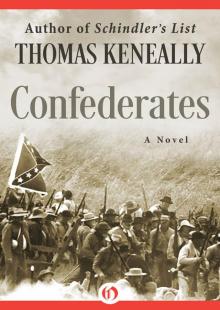 Confederates
Confederates Flying Hero Class
Flying Hero Class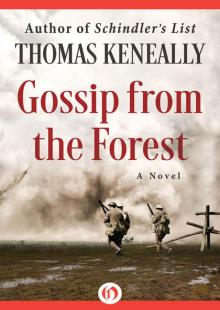 Gossip From the Forest
Gossip From the Forest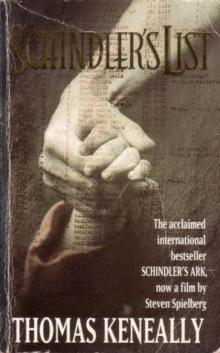 Schindler's List
Schindler's List Bring Larks and Heroes
Bring Larks and Heroes Australians: Flappers to Vietnam
Australians: Flappers to Vietnam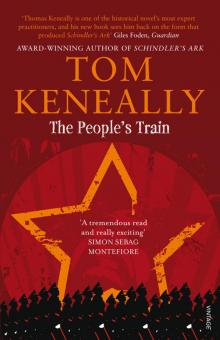 The People's Train
The People's Train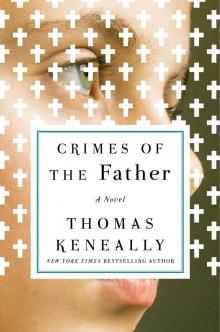 Crimes of the Father
Crimes of the Father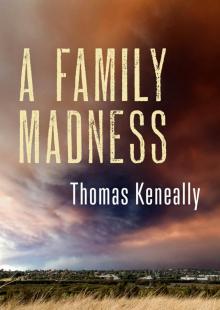 A Family Madness
A Family Madness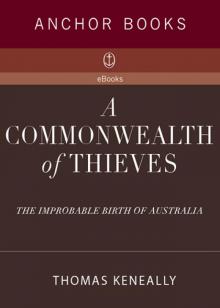 A Commonwealth of Thieves
A Commonwealth of Thieves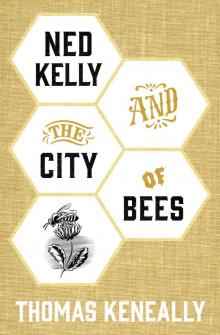 Ned Kelly and the City of Bees
Ned Kelly and the City of Bees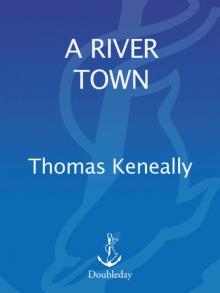 A River Town
A River Town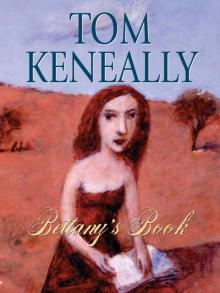 Bettany's Book
Bettany's Book Blood Red, Sister Rose: A Novel of the Maid of Orleans
Blood Red, Sister Rose: A Novel of the Maid of Orleans Victim of the Aurora
Victim of the Aurora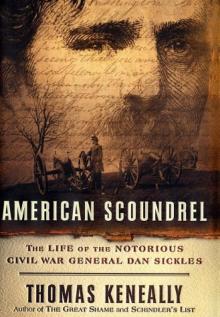 American Scoundrel American Scoundrel American Scoundrel
American Scoundrel American Scoundrel American Scoundrel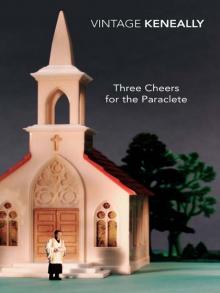 Three Cheers for the Paraclete
Three Cheers for the Paraclete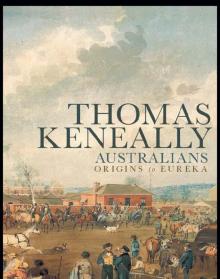 Australians: Origins to Eureka: 1
Australians: Origins to Eureka: 1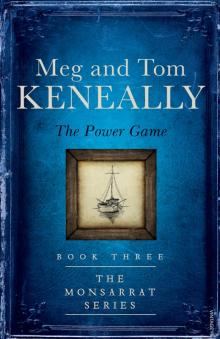 The Power Game
The Power Game The Chant Of Jimmie Blacksmith
The Chant Of Jimmie Blacksmith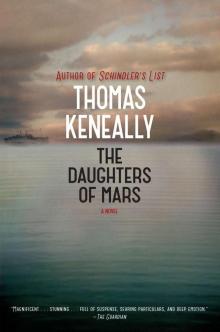 The Daughters of Mars
The Daughters of Mars Searching for Schindler
Searching for Schindler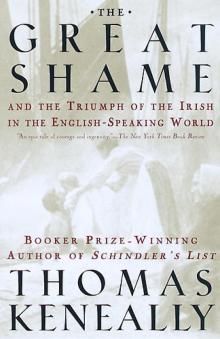 The Great Shame: And the Triumph of the Irish in the English-Speaking World
The Great Shame: And the Triumph of the Irish in the English-Speaking World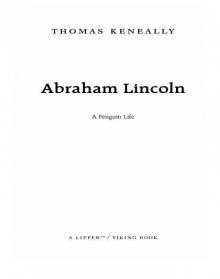 Abraham Lincoln
Abraham Lincoln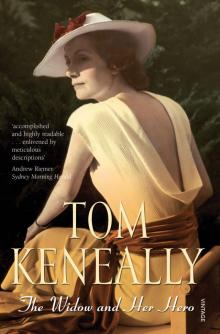 The Widow and Her Hero
The Widow and Her Hero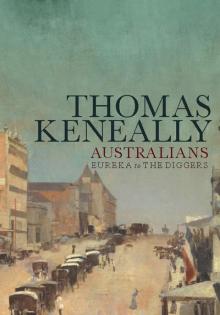 Eureka to the Diggers
Eureka to the Diggers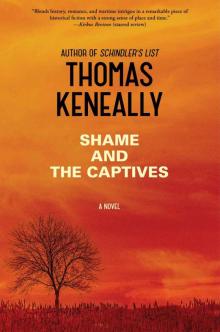 Shame and the Captives
Shame and the Captives The Survivor
The Survivor Jacko: The Great Intruder
Jacko: The Great Intruder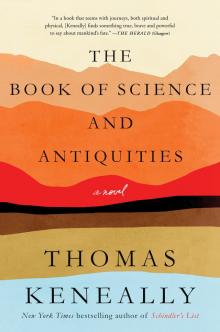 The Book of Science and Antiquities
The Book of Science and Antiquities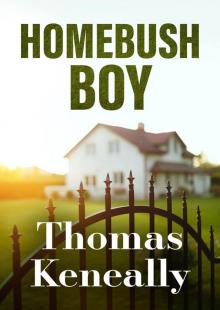 Homebush Boy
Homebush Boy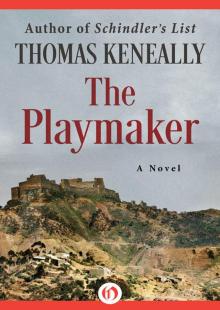 The Playmaker
The Playmaker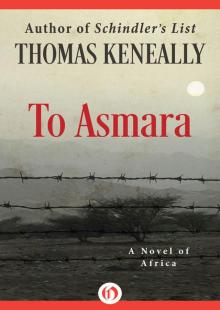 To Asmara: A Novel of Africa
To Asmara: A Novel of Africa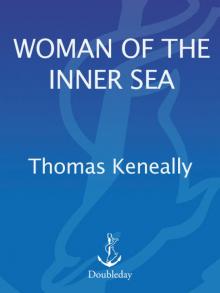 A Woman of the Inner Sea
A Woman of the Inner Sea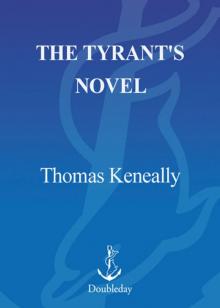 The Tyrant's Novel
The Tyrant's Novel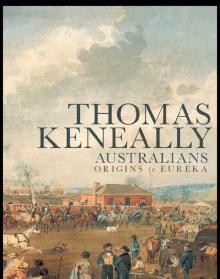 Australians
Australians Schindler's Ark
Schindler's Ark The Soldier's Curse
The Soldier's Curse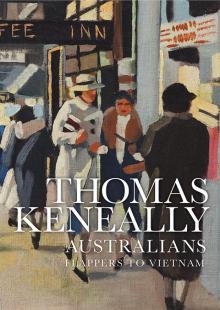 Australians, Volume 3
Australians, Volume 3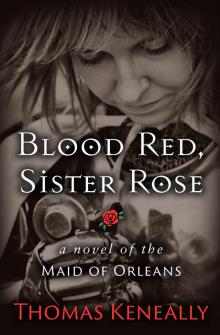 Blood Red, Sister Rose
Blood Red, Sister Rose A Victim of the Aurora
A Victim of the Aurora The Unmourned
The Unmourned Australians, Volume 2
Australians, Volume 2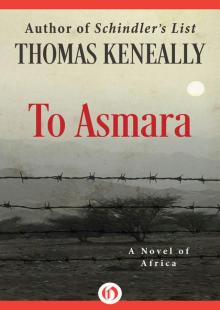 To Asmara
To Asmara